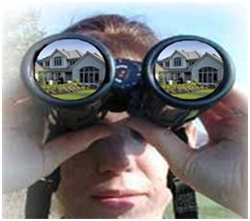
By Brian Stearns, Alpine SnowGuards
 Having
your roof inspected is the single most important thing you can do to ensure its overall lifespan. Annually is better than never, but if you are in a location that experiences extreme weather conditions over different periods throughout the year (like
most of us), the majority of roofing contractors suggest inspecting your roof at least twice a year, in the Fall and again in the Spring or early Summer. Since Spring will be here before we know it, it’s actually a good time to start thinking
about this now.
Having
your roof inspected is the single most important thing you can do to ensure its overall lifespan. Annually is better than never, but if you are in a location that experiences extreme weather conditions over different periods throughout the year (like
most of us), the majority of roofing contractors suggest inspecting your roof at least twice a year, in the Fall and again in the Spring or early Summer. Since Spring will be here before we know it, it’s actually a good time to start thinking
about this now.
 Since
the roof is one of the most essential features of your home (or your school, your church, your library, your office), getting an inspection is a must, and it’s always a good idea to make sure everything is as it should be BEFORE the extremities
of weather have a chance to exacerbate any deterioration.
Since
the roof is one of the most essential features of your home (or your school, your church, your library, your office), getting an inspection is a must, and it’s always a good idea to make sure everything is as it should be BEFORE the extremities
of weather have a chance to exacerbate any deterioration.
 So,
what do you need to do? Well, a basic roof inspection can actually be done from the ground by using binoculars. This is recommended for homeowners, and unless you’re comfortable on a ladder, and are experienced on the roof, getting up there
really should be left to a professional (you can expect a professional roof inspection to take anywhere from an hour to several hours, depending on the size, shape and materials of your roof).
So,
what do you need to do? Well, a basic roof inspection can actually be done from the ground by using binoculars. This is recommended for homeowners, and unless you’re comfortable on a ladder, and are experienced on the roof, getting up there
really should be left to a professional (you can expect a professional roof inspection to take anywhere from an hour to several hours, depending on the size, shape and materials of your roof).
Roof inspections can cost anywhere from $150 to $500, again depending on size, shape, and materials. Some roofing contractors will even do it for free, in hopes of you hiring them to fix any discovered damages, either on the spot or in the future.
 Either
way, here are some things to look for (some obvious, some not so obvious):
Either
way, here are some things to look for (some obvious, some not so obvious):
• Holes
• Clumps of leaves
• Branches
• Algae
• Moss (there are moss eliminators available made specifically for roofs)
• Displaced or missing shingles
• Blistering, buckling or curling shingles
• Raised nails that may need to be hammered back into place
• Warping or dry rot on wood shake or shingles
• Rusting or corrosion on metal roofs
• Missing, chipping or breaking slate or tile
• Cracked caulk
• Rusted, bent, missing or damaged flashing
• Cracked or broken-down boots around pipe vents
• Damaged or missing chimney cap (not technically a part of the roof, but you might as well check while you’re looking)
 Take
note – having minor problems repaired at their onset will help prevent further damage and ensure the roof over your head stays in good condition and can keep on doing what it’s designed to do – protect you and your family from the
elements. And if you think about it, inspecting your roof now could save you a ton of money down the road – after all, replacing a roof is much more costly than preventing the damage in the first place.
Take
note – having minor problems repaired at their onset will help prevent further damage and ensure the roof over your head stays in good condition and can keep on doing what it’s designed to do – protect you and your family from the
elements. And if you think about it, inspecting your roof now could save you a ton of money down the road – after all, replacing a roof is much more costly than preventing the damage in the first place.
While you’re at it, don’t forget to take a look at your gutters – remove debris, make sure your downspouts aren’t clogged, and give them a general overall cleaning.
Now that you’ve fully assessed and noted those areas in need of repair, contact at least 2 professional roofing contractors so you have a good comparison of estimated costs, timelines, etc…
If you set a roof inspection date on your calendar and stick to it year after year, you can be confident in knowing that you will save over the long term by taking care of minor damages as they occur (or as close to the occurrence as possible). Plus,
saving the headache (and bank account) of an entire reroof, if possible, is worth any time and costs associated to a roof inspection.